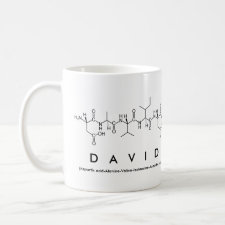
Authors: Meng AC, LeJeune J, Spivak DA
Article Title: Multi-analyte imprinting capability of OMNiMIPs versus traditional molecularly imprinted polymers.
Publication date: 2009
Journal: Journal of Molecular Recognition
Volume: 22
Issue: (2)
Page numbers: 121-128.
DOI: 10.1002/jmr.901
Abstract: One monomer molecularly imprinted polymers (OMNiMIPs) have enhanced binding and selectivity properties versus traditionally formulated ethylene glycol dimethacrylate (EGDMA)/methacrylic acid (MAA) imprinted polymers. Further comparison was investigated toward multi-analyte imprinting capability of these two imprinted materials. Two templates, (R)-(+)-1,1prime-bi-2-naphthol and BOC-L-tyrosine were simultaneously imprinted in the polymers, and the enantioselectivity compared to polymers imprinted with one template at a time. The simultaneously imprinted OMNiMIP exhibited only 6.3 and 21.1% loss in enantioselectivity for (R)-(+)-1,1prime-bi-2-naphthol and BOC-L-tyrosine respectively, versus the singly imprinted OMNiMIPs. For the EGDMA/MAA imprinted polymer, enantioselectivity was only found for (R)-(+)-1,1prime-bi-2-naphthol, with 59.1% loss in enantioselectivity found for the multiple-template imprinted polymer versus the (R)-(+)-1,1prime-bi-2-naphthol singly imprinted polymer. It was also shown that imprinting two templates simultaneously leads to better enantioselective performance than mixing the particles of singly imprinted polymers. For example, the enantioselectivity of the R enantiomer of 1,1prime-bi-2-binapthol on the simultaneously imprinted OMNiMIP gave a separation factor (alpha) value of 4.4, while the mixed-particle column gave an alpha value of 2.6. In addition, it was found that mixing an imprinted polymer with a non-imprinted polymer resulted in complete loss of chromatographic enantioselectivity in all cases (except the one that still showed severe loss of selectivity). Collectively, the results illustrate that imprinting mixtures of templates simultaneously is the method of choice, especially for OMNiMIPs, for producing multi-analyte molecular recognition in imprinted polymers. Copyright © 2009 John Wiley & Sons, Ltd
Template and target information: template mixtures, mixed templates, (R)-(+)-1,1prime-bi-2-naphthol and BOC-L-tyrosine, BOC-L-tyrosine and (R)-(+)-1,1prime-bi-2-naphthol, BOC-L-tyrosine, (R)-(+)-1,1prime-bi-2-naphthol
Author keywords: imprinted polymer, mixture, separation, enantioselectivity, Recognition, chromatography



Join the Society for Molecular Imprinting

New items RSS feed
Sign-up for e-mail updates:
Choose between receiving an occasional newsletter or more frequent e-mail alerts.
Click here to go to the sign-up page.
Is your name elemental or peptidic? Enter your name and find out by clicking either of the buttons below!
Other products you may like:
 MIPdatabase
MIPdatabase









